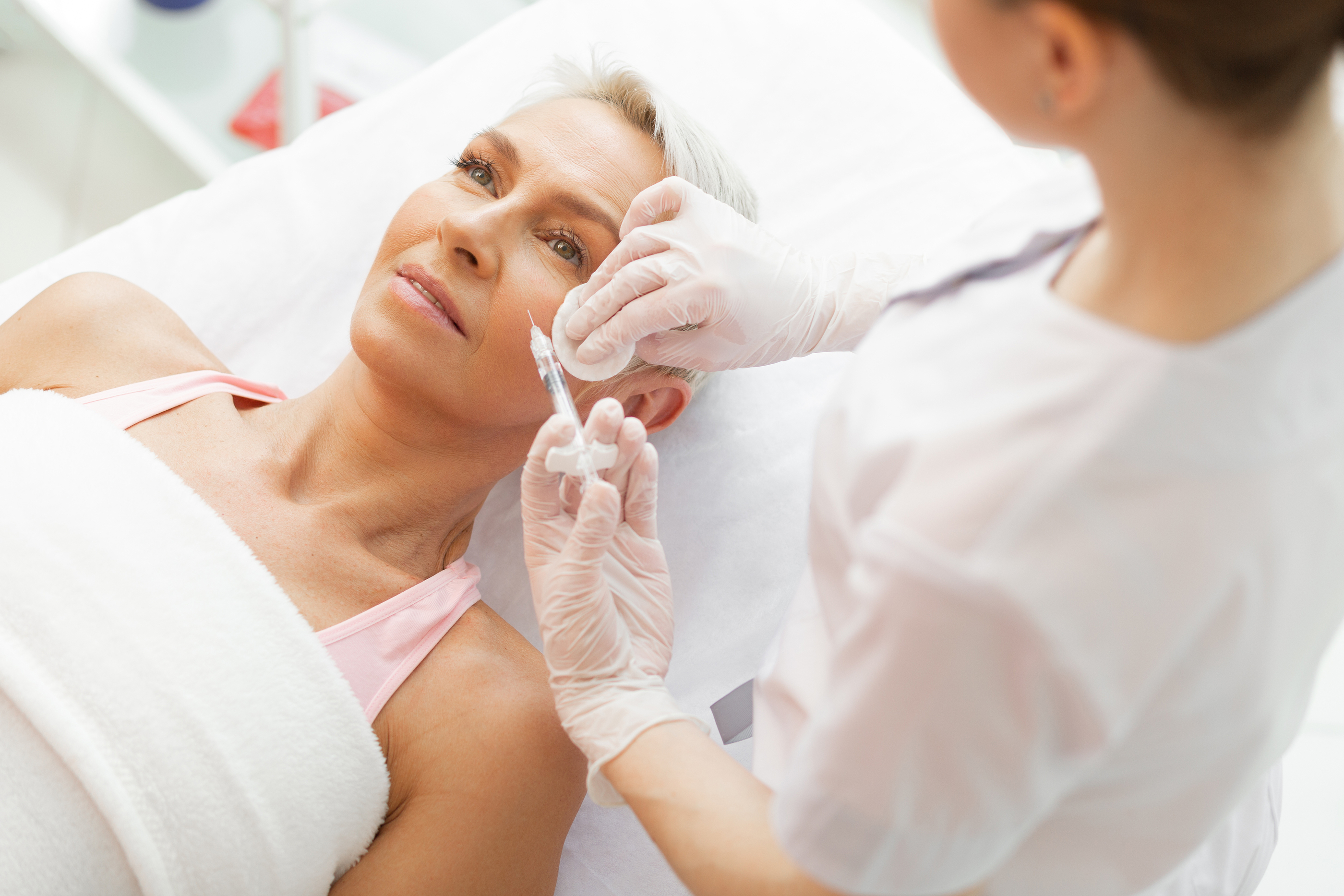While Botox® injections are primarily known as a method to reduce the appearance of wrinkles and fine lines, there are actually a variety of other conditions Botox injections can treat. Botox injections have proven to be a very versatile treatment, not only helping patients reduce and prevent visible signs of aging, but also proving to be an effective way to treat sweating, and more. Below, learn about some of the other conditions Botox injections can treat.
Sweating (Hyperhidrosis)
For those who have issues with excessive sweating, any type of treatment or solution is welcome. Excessive sweating, also known as hyperhidrosis, can lead to a life full of difficult circumstances. A steady stream of sweat, along with the odor that usually accompanies sweat, can make a business meeting, date, or any other situation awkward and uncomfortable. Fortunately, excessive sweating is one of the conditions Botox injections can treat.
Botox injections can target sweat glands in the areas in which sweat is typically most present, such as the underarms. Botox will freeze the sweat glands in the target area, causing them to temporarily no longer function properly. Usually, small muscles around sweat glands squeeze sweat out of the glands when it is hot or an individual is exercising. Patients with hyperhidrosis are always sweating, regardless of what they are doing or the temperature.
After Botox injections, the muscles in and around the sweat glands will remain dormant. As a result, not only will patients sweat less, but the treated area will also omit less unpleasant odors. The treatment is so effective that in 2004 the FDA approved Botox as a valid treatment for excessive sweating.
Tension Headaches
Tension headaches are different from migraine headaches, as they are less painful but much more common. In fact, tension headaches are the most common type of headaches, and those who suffer from tension headaches are constantly looking for effective treatment and relief.
While relaxation techniques and biofeedback training can help prevent tension headaches, Botox can help provide very effective treatment for tension headaches. For those who battle chronic tension headaches, Botox can provide relief and reduce the number of tension headaches the patient will experience.
TMJ Pain (Teeth Clenching and Grinding)
For those who are constantly clenching or grinding their teeth, there is likely to be some fallout from those actions. More specifically, teeth clenching and grinding can lead to the development of TMJ (temporomandibular joint) disorders that cause tension and pain in and around the jaw.
TMJ disorders are conditions Botox injections can treat, as Botox injections relieve jaw tension by making the muscles surrounding the jaw unable to engage in the kinds of movements that can lead to pain over time. Botox can reduce the number and severity of headaches that occur as a result of TMJ pain as well as minimize the occurrence of lockjaw. Most patients can see improvement in TMJ pain and symptoms in as little as one to two days following Botox injections.
Chronic Pain
Chronic pain can be caused by a variety of different factors, including overactive muscles. Botox helps relax overactive muscles that may be the root cause of chronic pain, helping patients find sweet relief from chronic pain.
For example, patients with chronic neck pain may have stiff or damaged muscles in their neck. A Botox injection relaxes those muscles, allowing patients to live a happy and healthy life. Pain relief generally lasts between three and four months, after which patients are encouraged to undergo another series of Botox injections.
Depression and Anxiety
Botox is not just a treatment for physical pain. Botox has also been shown to be an effective treatment for emotional and psychological pain caused by depression and anxiety, with Botox injections lessening the symptoms of the two disorders. However, Botox should not be used as the only treatment for depression and anxiety, as the best results are found when Botox is combined with depression and anxiety medication.
While there is significant evidence that Botox can be beneficial in the treatment of depression and anxiety, experts are still not sure exactly how the treatment works. Some have speculated that since Botox makes it difficult or even impossible to frown or physically show other negative emotions, it can have a positive impact on the patient’s mood. There is a direct correlation between smiling and feeling good and frowning and feeling bad, so by restricting the ability to frown, Botox can help improve the way a patient with depression feels.
Scars
Botox can be effective in improving the appearance of scars, especially if the injection takes place while the incision or wound is still healing. Botox can reduce both the width of scars as well as how bumpy the scar appears, resulting in a more attractive and less visible appearance.
Botox helps reduce the appearance of scars by weakening the muscles underneath the initial wound or incision. By weakening the muscles, the skin under the incision moves less and produces less tension, resulting in a more effective healing process.
Learn About More Conditions Botox Injections Can Treat with Dr. Cabin
Dr. Jonathan Cabin is a world-renowned facial plastic and reconstructive surgeon, with experience and expertise with non-surgical facial rejuvenation treatments such as Botox injections.. If you are interested in learning about all of the conditions Botox injections can treat or you would like to schedule a consultation regarding Botox injections treatment, contact Dr. Cabin today by calling 703-718-4411.

